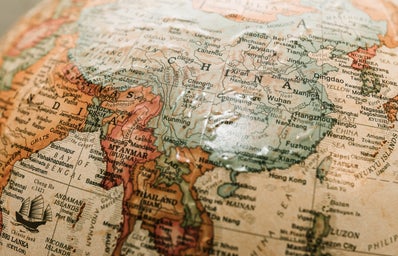This semester I am taking GS221, which is also known as the cosmopolitan village. It has been my favorite course I have ever taken at Laurier thus far and has opened my eyes to so many concepts that I have neglected in the past. Professor Bina Mehta takes her time to fully explain each concept and teaches in such an engaging, positive environment. I have never listened to a professor as intently as I do to her. She makes her classes so fun and inspiring, and if it weren’t for COVID-19, she would be making the class food each week! With all that being said, I would like to introduce you to a few topics we have covered in the course that will hopefully persuade you to take GS221 yourself. If you are out of school or don’t go to Wilfrid Laurier, I hope to introduce you to some new concepts to consider.
Cultural Homogenization
Countries are becoming more and more similar, losing their distinct cultural identity. While traveling in Thailand, I noticed every single street had a 7-Eleven on the corner. In some areas, it would be hard to differentiate Thailand from America because of its American distinctions. This is a result of globalization as the intense exchange of cultures and ideas has inspired the disposal of customary traditions. This is even more so a result of Americanization as American ideals have been pushed onto foreign countries since colonization. Specifically, cultural homogenization refers to the idea of cultures becoming similar globally. It has extremely negative effects as it is reducing the diversity of different cultures. As countries adopt different cultural practices from other countries, the world becomes more and more similar. In terms of examples, we can think about the love of yoga in western countries, consuming ethnic cuisine, wearing foreign fashion, watching anime and listening to all kinds of different cultural music.
Cultural Hybridization
Borrowing a part of another culture and combining it with a part of your culture to create something new and different. One afternoon in the quiet town of Kanchanaburi, Thailand, I went to eat at a cute little restaurant. One item, in particular, stood out to me on the menu. It was defined as a pork burger, however, when listing the ingredients, it had stated “rice bun”. This confused me and I was immediately intrigued and placed my order. Most classic hamburgers are eaten with hands, however, this burger had to be eaten with a knife and fork. Its essence was that of a burger, but the taste, texture and experience were something completely different. This is a prime example of cultural hybridization. This is the fusion of different cultures to combine them into one subculture. This rice bun burger wasn’t American culture or Asian culture but rather an American-Asian subculture. You can argue that this may enhance our world but also you can see this as a loss of diverse and unique cultures.
“Authenticity”
What does authentic really mean? In the readings and through Bina’s lectures, I have been introduced to the idea of questioning “authenticity”. In Canada, when we feel the need to experience exotic new foods, we look for restaurants with “authentic” or “traditional” written on their website or sign outside! However, is it really authentic or is it just socially constructed? In our readings, we found that in a case study, consumers that go to authentic Chinese restaurants are often outside of their ethnicity. Therefore, the restaurants will adjust the presentation and preparation of the restaurant and food to seem more appealing to the target audience. They want the customer to feel like they are having a more “authentic” cultural experience but at the same time, they appeal to their palate. Furthermore, these restaurants will change some ingredients in their “authentic” food to make it more appealing to accommodate the values of the host society. So, for example, the other day I ordered pad thai from an “authentic” Thai restaurant. However, interestingly enough, the restaurant had put tomato paste in the pad thai (it was obviously still delicious). It just begs the question, what really is “authentic”?
Cultural Colonialism
Are we stealing from other cultures in a disrespectful manner, without learning about the origins and importance? In another reading discussed during class, Lisa Heldke uses the term “cultural colonialism.” This is interesting as she talks about her experience as an adventurous cook, always trying to replicate foods of different ethnic cultures. She had come to recognize her attitude and motivations as bearing resemblance to western colonialism and imperialism. Her culture hopping in the kitchen was much like the mindset of the early European settlers who set out to search for “new” cultures to take from. Without respectful intentions and an effort to learn about other cultures while food adventuring, we participate in cultural colonialism.
These are just a few examples of some of the extremely interesting topics we discussed in GS221. I have barely scratched the surface on these topics, and there are more. The course has so much to offer, including how we see the world and how we interact and move through it. This course has truly changed my perspective on so many things and has inspired me to become a better person. I hope this article has taught you something new and inspires you to take GS221 in the future!



